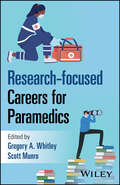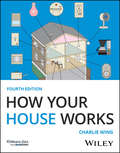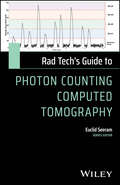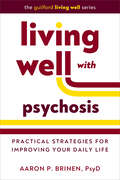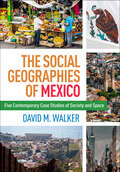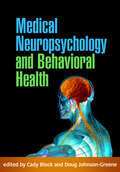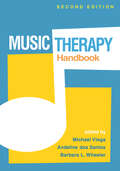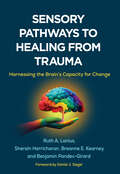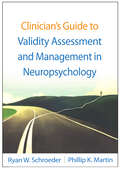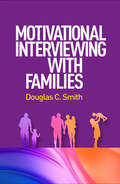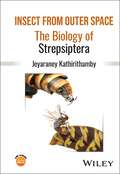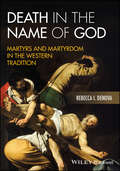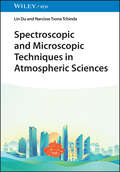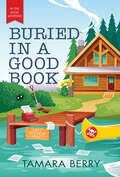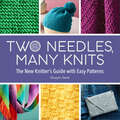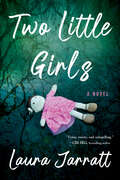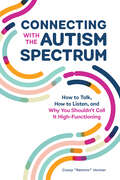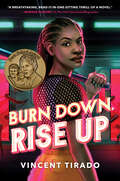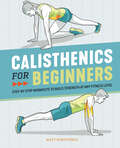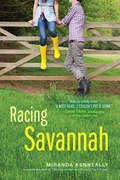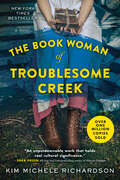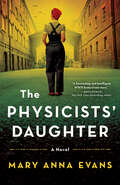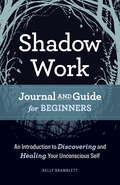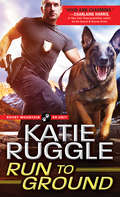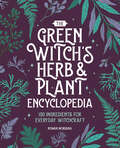- Table View
- List View
Research-focused Careers for Paramedics
by Scott Munro Gregory A. WhitleyPractical guidance for aspiring and established clinical academic paramedics In Research-focused Careers for Paramedics, a team of distinguished paramedic researchers provide practical guidance to support clinical academic career development. Written to support paramedics across the globe who have an interest in research, this book offers a guide through the stages of a research-focused career, from novice to expert. Supported by international case studies from 15 paramedics at various stages of their own research-focused career, this book provides real-world guidance for aspiring and established clinical academic paramedics. Readers will find: Expert advice on career development, mentorship, networking and funding applications for research grants and fellowshipsComprehensive explorations of the paramedic education systems across multiple countries Practical discussions of the authors’ four-stage career model of paramedic research: novice, competent, proficient, expertReal-world case studies shedding light on the opportunities and challenges posed by each stage of the paramedic research career model Perfect for practicing paramedics with an interest in research, Research-focused Careers for Paramedics will also benefit students of paramedicine and researchers with a background in paramedicine.
How Your House Works (RSMeans)
by Charlie WingFIX IT. MAINTAIN IT. UNDERSTAND IT. THE LATEST EDITION OF THE BESTSELLING VISUAL GUIDE FOR ALL HOMEOWNERS. Most people will never make a more important purchase than a house; properly understanding and maintaining your home can be a fundamental component of a financially sound life. Most homeowners, however, rely on contractors and building engineers to understand the systems that comprise a modern home. There is an urgent need for a guide which makes these essential systems transparent to the general consumer. How Your House Works provides a working overview of all the basic systems that make up your home, from electrical systems to HVAC to plumbing and beyond. Richly illustrated and with clear, accessible language, this book demystifies the foundations of home ownership and puts you in control of the structures that make your house work. Readers of the fourth edition of How Your House Works will also find: New chapters on household batteriesExpanded sections pertaining to smart home technology and sustainabilityDetailed, full-color illustrations by the author How Your House Works is a must-have for any homeowner or prospective buyer.
Rad Tech's Guide to Photon Counting Computed Tomography (Rad Tech's Guides')
by Euclid SeeramConcise guide offering a thorough exploration of the transformative technology of photon counting Rad Tech’s Guide to Photon Counting Computed Tomography is a comprehensive resource that enables readers to stay at the forefront of medical imaging with the first FDA-cleared Photon Counting Computed Tomography (PCCT) scanner. Ensuring compliance and cutting-edge practice, readers can prepare for the future with a guide that addresses upcoming educational requirements in medical imaging technology. This book is designed for quick reference, with precise, bulleted guidance, and material that aligns with international standards. Rad Tech’s Guide to Photon Counting Computed Tomography includes information on: Essential physics of radiation attenuation in CT and the physical principles of MSCT imaging, with a review of CT image qualityFundamental physical principles of PCCT, including the technical design characteristics of their semiconductor sensors and associated electronicsAdvantages of PCCT systems compared to CT systems using EIDs, with each advantage illustrated with selected anatomical areasElements of the ACR manual for quality control of CT systems and quality assurance programs for a PCD CT imaging system Suitable for an international audience, Rad Tech’s Guide to Photon Counting Computed Tomography is an excellent reference for professionals and practitioners in the fields of computed tomography, nuclear medicine, diagnostic medical sonography, magnetic resonance imaging, and biomedical engineering technology.
Living Well with Psychosis: Practical Strategies for Improving Your Daily Life (The Guilford Living Well Series)
by Aaron P. BrinenFor people with psychosis, recovery is a winding path, not a straight line. And the best person to steer your recovery is you. Leading psychologist Aaron P. Brinen busts myths and helps you build the life you want in this empowering book. Dr. Brinen provides step-by-step guidance for becoming a strong self-advocate, navigating treatment options, managing symptoms that cause distress, and coping with stigma. Learn crucial ways to connect with others, pursue your goals at school or work, and keep your body healthy. The brief chapters are warm and compassionate, with downloadable practical tools designed to boost your energy and motivation for getting out into the world. This is a book you can read cover to cover--or dip into any time you need extra support to live well and feel good.
The Social Geographies of Mexico: Five Contemporary Case Studies of Society and Space
by David M. WalkerExamining the links between society, space, and place, this unique text introduces students to the ecological and cultural richness of Mexico and the diversity, tenacity, and resilience of its people. David M. Walker presents compelling ethnographic case studies of Mexico City's historic center and the adjacent Tepito neighborhood; life in the border city of Tijuana; and urban Mexican garbage networks. Cases also explore Afromexican identity in the Costa Chica of Guerrero and Oaxaca, as well as the Indigeneous Zoque people's stewardship of the remote Chimalapas region. Readers are immersed in the stories of real individuals and their livelihood strategies; natural and built environments; values and faith practices; leisure activities; foodways; involvements in local to global cultural, political, and economic processes; and more. Instructive features include topical vignettes, discussion questions, and suggested readings and online resources related to each case.
Medical Neuropsychology and Behavioral Health
by Cady Block Doug Johnson-GreeneIt is increasingly recognized that medical conditions can have a range of neurocognitive, psychosocial, and functional implications, even in the absence of obvious neurological involvement. Filling a gap in the literature, this comprehensive clinical reference reviews current research and provides clear guidelines for assessment and intervention. Chapters organized around major bodily systems--for example, cardiovascular, endocrine, immune/lymphatic--probe neurocognitive impairments associated with prevalent health conditions and their treatments, including coverage of COVID-19. State-of-the-science chapters on lifestyle behaviors and habits explore the neurocognitive impact of sleep and fatigue, nutrition and weight, acute and chronic pain (and the use of opioid analgesics), personality and temperament, and substance misuse.
Music Therapy Handbook
by Barbara L. Wheeler Michael Viega Andeline Dos SantosRich with case material, the second edition of this respected text has been thoroughly revised with many new contributing authors and 85% new material. The Handbook comprehensively explores music therapy theory, research, and practice. Chapters cover foundational concepts and therapeutic processes, major approaches to practice, and clinical applications with people of all ages. The second edition has a heightened focus on diversity, equity, inclusion, accessibility, and cultural humility. Expert contributors describe state-of-the-art practices for using music to foster clients' well-being and recovery in a broad range of mental health, medical, and community settings. New to This Edition Expanded coverage of working with marginalized communities, including racially minoritized, refugee, LGBTQIA+, and neurodiverse clients, and an increased emphasis on therapist reflexivity. Provides an integrated conceptual framework for understanding different music therapy approaches. First edition editor Barbara L. Wheeler is joined by Michael Viega and Andeline dos Santos, who bring fresh perspectives and a more international scope.
Sensory Pathways to Healing from Trauma: Harnessing the Brain's Capacity for Change
by Ruth A. Lanius Sherain Harricharan Breanne E. Kearney Benjamin Pandev-GirardThis forward-thinking book explores the impact of psychological trauma on the brain's sensory pathways and demonstrates the crucial role sensory-based interventions can play in recovery. Ruth A. Lanius and associates interweave neurobiological research with evocative case examples and narratives from survivors. The book shines a spotlight on the brain–body disconnect that is part of the lived experience of trauma, and traces what happens in all eight sensory systems when an individual is under threat. Featuring "Bridging to Practice" sections in each chapter, the book reveals how working with sensory pathways can engage the whole brain, promote neuroplasticity, and optimize the effectiveness of standard psychotherapies. Illustrations include eight pages in full color.
Clinician's Guide to Validity Assessment and Management in Neuropsychology (Evidence-Based Practice in Neuropsychology Series)
by Ryan W. Schroeder Phillip K. MartinThis unique hands-on guide walks neuropsychologists through the process of validity assessment and management in real-world clinical settings. Emphasizing the medical necessity of evaluating validity, the authors provide detailed examples, procedural tips, and downloadable practical tools. Step-by-step guidelines are presented for managing potentially complicated referrals, using the clinical interview to gain awareness of possible concerns, choosing and administering performance and symptom validity tests, and providing feedback and treatment recommendations when invalidity is identified. Clinician–patient relationship issues are sensitively addressed. The book concludes with a chapter-length case example.
Motivational Interviewing with Families (Applications of Motivational Interviewing Series)
by Douglas C. SmithWhile motivational interviewing (MI) was developed as a counseling approach for individuals, it also has tremendous utility for helping families change and grow. This book offers the first comprehensive guide to adapting MI skills to engage families--including reluctant members--in therapy and mobilize family-level change processes. Extensive annotated sample dialogues show how MI can be integrated with any therapy approach for families struggling with mental health problems, addictions, relationship challenges, difficult life transitions, or other concerns. Special features include boxed sidebars, reflection questions, and practice exercises. The Appendix and companion website provide additional helpful resources for using MI with families. This book is in the Applications of Motivational Interviewing series, edited by Stephen Rollnick, William R. Miller, and Theresa B. Moyers.
Insect from Outer Space: The Biology of Strepsiptera
by Jeyaraney KathirithambyComprehensive account of Strepsiptera biology, including their taxonomy, morphology, fine structure, physiology, and behaviour, ranging from genes to phylogeny Beautifully illustrated in full color throughout, with original up-to-date material from the author’s research collection, Insect from Outer Space: The Biology of Strepsiptera is the first book to provide a comprehensive guide to the unique biology of an intriguing group of parasitoids that, until relatively recently, have remained something of a mystery in terms of both phenotype and genotype. The author explores the exciting biology and life history of these extraordinary insect parasitoids. In addition, the book provides a history of each family, and an account of the questions surrounding the evolution of Strepsiptera, explaining their position within the phylogeny of insects. Written by a leading international expert in the field, this book includes information on: Strepsiptera, which are among the least species-rich insect parasitoids, but they parasitise hosts from seven orders and 36 families of insectsThe two examples of polyphensim that Strepsiptera exhibit are: i) free-living planidia that moult to endoparasitic larvae; and ii) the neotenic females of derived familiesAdult males are free-living, while females are free-living in primitive families, and are endoparasitic and neotenic in derived familiesMetamorphosis is a crucial process in the evolution of the sexually dimorphic Strepsiptera, and the neotenic females in derived families undergo a metamorphic transformation in the cephalothoracic regionDifferences in Strepsiptera life cycles between the suborders Mengenillidia (a more ancestral lineage) and Stylopidia (a recent suborder) Insect from Outer Space: The Biology of Strepsiptera is an essential reference work for entomologists and biologists alike who seek to unravel the secrets of these extraordinary creatures. The text is also an excellent learning resource for graduate and undergraduate students because the unique biology of Strepsiptera answers a wide range of biological questions.
Death in the Name of God: Martyrs and Martyrdom in the Western Tradition
by Rebecca I. DenovaExplores the evolution of martyrdom across Judaism, Christianity, and Islam Martyrdom has long been a defining concept in religious traditions, shaping the identities of faith communities and influencing theological thought across centuries. Death in the Name of God: Martyrs and Martyrdom traces the historical development of this powerful idea within Judaism, Christianity, and Islam, examining how cultural, social, and political contexts have influenced evolving interpretations of martyrdom. Through a multidisciplinary lens, noted scholar Rebecca I. Denova provides a comprehensive analysis of how each tradition adapted and redefined martyrdom in response to changing historical circumstances. By offering historical depth and critical examination, the author helps readers understand how martyrdom has been utilized to define faith, legitimacy, and religious authority in different eras. An accessible yet rigorous study of the roots and transformations of martyrdom, Death in the Name of God features detailed historical context, primary source discussions, and thematic analyses. The book's three-tiered methodological framework—descriptive, comparative, and critical—guides readers through the role of martyrdom in shaping religious belief systems, including its origins in ancient traditions, its role in theological and political developments, and its continued significance in modern religious and social discourse. An essential resource for understanding the enduring impact of martyrdom in Western religious thought, Death in the Name of God: Provides a multidisciplinary analysis of martyrdom through history, incorporating anthropology, sociology, philosophy, and religious studies Explores how martyrdom developed in response to shifting historical and cultural contexts Features sections that offer deeper insight into key topics such as the evolution of Satan and distinctions in martyrdom between Sunni and Shi′a Islam Examines how martyrdom transitioned from an act of deliberate sacrifice to a modern concept of victimhood and social struggle Includes timelines, figures, and archaeological findings to provide visual and historical context Offering a non-theological, academic perspective that fosters objective discussion on a historically and politically charged topic, Death in the Name of God: Martyrs and Martyrdom is perfect for courses in Religious Studies, History, Theology, and Middle Eastern Studies. It is particularly well-suited for degree programs in the liberal arts and social sciences, offering foundational knowledge for courses on the history of Judaism, Christianity, and Islam, as well as broader discussions on religious violence and martyrdom in contemporary society.
Spectroscopic and Microscopic Techniques in Atmospheric Sciences
by Lin Du Narcisse Tsona TchindaA timely and current discussion of instrumental techniques in atmospheric sciences In Spectroscopic and Microscopic Techniques in Atmospheric Sciences, a team of distinguished researchers delivers an authoritative and up-to-date discussion of the latest developments in sophisticated analytical techniques and their applications in atmospheric sciences, including chemical identification and characterization, determination of reaction mechanisms and kinetics, and qualitative and quantitative analysis. Each chapter presents the development of a different analytical method from first principles and highlights the major developments in the technique to date. The book also covers the weaknesses and strengths of each technique and the suitability of its applications in indicated environmental media. Readers will also find: A thorough introduction to relevant atmospheric processesComprehensive explorations of mass spectrometry and optical, electron, and atomic force microscopyPractical discussions of fluorescence spectroscopy and ultraviolet-visible absorption spectroscopyComplete treatments of infrared spectroscopy and Raman spectroscopy Perfect for graduate students undertaking courses in atmospheric sciences, Spectroscopic and Microscopic Techniques in Atmospheric Sciences will also benefit environmental chemists, climatologists, and analytical chemists.
Buried in a Good Book (By the Book Mysteries #1)
by Tamara Berry2023 EDGAR AWARD WINNER: LILIAN JACKSON BRAUN MEMORIAL PRIZE"A slapstick comedy of murder." —Library Journal "This first in series is truly original, funny, and well written. A real standout." —Mystery Scene Bestselling thriller writer Tess Harrow is almost at the end of her rope when she arrives with her teenage daughter at her grandfather's rustic cabin in the woods. She hopes this will be a time for them to heal and bond after Tess's recent divorce, but they've barely made it through the door when an explosion shakes the cabin. Suddenly it's raining fish guts and…is that a human arm?Tess was hardly convincing Gertie that a summer without Wi-Fi and running water would be an adventure. Now she's thrust into a murder investigation, neighbors are saying they've spotted Bigfoot in the woods near her cabin, and the local sheriff is the spitting image of her character Detective Gabriel Gonzales—something he's less than thrilled about. With so much more than her daughter's summer plans at stake, it's up to Tess to solve this case before anyone else gets hurt.Put your sleuthing hat on—Buried in a Good Book features:A thriller writer who knows way more than anyone should about death and dismembermentHer young daughter who's more intrigued by dead bodies than she probably should beAn isolated cabin in the woods that's probably—definitely—hiding somethingThe tiny mountain town that seems less than troubled by a sudden abundance of murders
Two Needles, Many Knits: The New Knitter's Guide with Easy Patterns
by Quayln StarkLearn how to knit—from a simple square to an entire sweater!"This valuable debut guide from Stark tells beginners all they need to know to get started knitting."— Publishers Weekly"This book's bright colors plus the ease of following Stark's instructions just might result in converts to the craft." — BooklistWondering where to start with knitting? Look no further! Two Needles, Many Knits is your one-stop-shop for knitting like a pro, with simple explanations of every essential technique and stitch. Once you master the basics, try out guided tutorials—complete with photos—for 15 knitting projects that put your new knowledge to use and help your skills and inspiration grow.Get to know your yarn—What's a purl stitch? Should you use acrylic or wool? How do you read a knitting pattern? Find the answers to the common knitting conundrums you might encounter.Expand your knitting know-how—This knitting book is divided into 3 skill levels, so you can practice at your own pace and knit your way from your first stitch to a complete garment.Projects you'll love—Create a Lapis Cinched Beanie, a Quartz Bias Scarf, or a Citrine Baby Basketweave Vest—the hardest part is deciding whether to give them as a gift or keep them for yourself!Discover how easy knitting can be with this ultimate all-in-one guide to knitting for beginners.
Two Little Girls: A Novel
by Laura Jarratt"This heartfelt story grabs the reader from the very start and doesn't let go. Psychological thrillers fans won't want to miss this one."—Publishers WeeklyShe has to time to save one of her daughters. Only one. Can she choose?When Lizzie's car crashes with her two daughters inside, she faces a terrible choice. And when she recovers from her injuries, she must deal with the impact of that tragedy and the police investigation into it. As Lizzie and her family struggle to come to terms with the events of that night, things take an even darker turn. What exactly happened on that remote country road? Who is responsible? And can the family get through this together... or will the truth finally tear them apart?Perfect for fans of Lisa Jewell, Two Little Girls is a riveting page-turner that combines deep emotion with a mesmerizing plot, taking us deep inside the secret life of a family with plenty to hide and the unthinkable choice that one mother is forced to make.
Connecting With The Autism Spectrum: How To Talk, How To Listen, And Why You Shouldn't Call It High-Functioning
by Casey "Remrov" VormerThe complete guide to connecting with adults on the autism spectrum - one of the 2021 Best Books on Autism from ChoosingTherapy.comFor a friend, family member, or coworker with autism, communication can be challenging. But Connecting with the Autism Spectrum can help you find common ground with expert tips and helpful insights about talking (and listening) to neurodiverse adults so you can make your interactions more transparent, meaningful, and rewarding for all.Written by Casey Vormer, a self-taught artist and autism advocate, this comprehensive guide is a trusted source for understanding neurodiversity that features a brief introduction to the autism spectrum. It also provides easy communication strategies like active listening and positive encouragement as well as steps to avoid misunderstandings by teaching how to recognize biases and correct them. Additionally, you'll learn why the term "high functioning autism" is a misnomer to define members of this vibrant community."It's important to look at every autistic person individually and recognize their obstacles—but more importantly, we should acknowledge their skills and avoid labeling them with 'high functioning autism' or 'low functioning autism' altogether," Vormer says.Unlike other autism books, Connecting with the Autism Spectrum delivers:An easy approach—Discover the best ways to communicate with those living with autism.Situational success—Find the right information for various situations and settings, including school, work, and social relationships.A sensitive tone—Get valuable information from a clear, honest point of view that does not seek to "cure" or manipulate people.Learn how to communicate better with those on the autism spectrum with this informative book.
Burn Down, Rise Up
by Vincent TiradoThe 2023 Pura Belpré Award-winning young adult novel!Mysterious disappearances. An urban legend rumored to be responsible. And one group of friends determined to save their city at any cost. Stranger Things meets Jordan Peele in this acclaimed novel from an incredible new voice.For over a year, the Bronx has been plagued by sudden disappearances that no one can explain. Sixteen-year-old Raquel does her best to ignore it. After all, the police only look for the white kids. But when her crush Charlize's cousin goes missing, Raquel starts to pay attention—especially when her own mom comes down with a mysterious illness that seems linked to the disappearances.Raquel and Charlize team up to investigate, but they soon discover that everything is tied to a terrifying urban legend called the Echo Game. The game is rumored to trap people in a sinister world underneath the city, and the rules are based on a particularly dark chapter in New York's past. And if the friends want to save their home and everyone they love, they will have to play the game and destroy the evil at its heart—or die trying.
Calisthenics for Beginners: Step-by-Step Workouts to Build Strength at Any Fitness Level
by Matt SchifferleAchieve your fitness goals with calisthenics—no weights, trainer or gym required Gain strength, mobility, endurance, and flexibility using simple body movements and nothing more than your own weight. Calisthenics for Beginners provides an all-inclusive training plan that won't require massive sacrifices to your time, energy, or wallet. Power through three calisthenic workout programs that progress in technique and intensity as you build a comprehensive understanding of this approachable training method. Then, explore recovery techniques, plus guidelines for creating a workout routine that fits your personal goals and lifestyle. Calisthenics is the workout of choice for athletes of all fitness levels, from weekend walkers to professional sports stars. Calisthenics for Beginners includes: Training for all levels—Endlessly adjustable and customizable calisthenics workouts meet you where you are and serve your unique fitness goals. Full-body workouts—This complete, efficient approach to fitness works your whole body with a series of simple movement patterns. Variety, versatility, and fun—More than 35 dynamic exercises featuring the progressions, modifications, and variations you need to keep it interesting, challenging, and engaging. The myth that getting fit requires a gym, a trainer, and even weights has been disproven—calisthenics is the physical conditioning way of the future.
Racing Savannah (Hundred Oaks #4)
by Miranda KenneallyThey're from two different worlds.He lives in the estate house, and she spends most of her time in the stables helping her father train horses. In fact, Savannah has always been much more comfortable around horses than boys. Especially boys like Jack Goodwin—cocky, popular and completely out of her league. She knows the rules: no mixing between the staff and the Goodwin family. But Jack has no such boundaries.With her dream of becoming a jockey, Savannah isn't exactly one to follow the rules either. She's not going to let someone tell her a girl isn't tough enough to race. Sure, it's dangerous. Then again, so is dating Jack..Praise for Miranda Kenneally:"Kenneally's books have quickly become must-reads."—VOYA"Fresh, fearless, and totally romantic."—Sarah Ockler, bestselling author of Twenty Boy Summer and Bittersweet on Stealing Parker
The Book Woman of Troublesome Creek: A Novel
by Kim Michele RichardsonRECOMMENDED BY DOLLY PARTON IN PEOPLE MAGAZINE!A NEW YORK TIMES BESTSELLERA USA TODAY BESTSELLERA LOS ANGELES TIMES BESTSELLERThe bestselling historical fiction novel from Kim Michele Richardson, this is a novel following Cussy Mary, a packhorse librarian and her quest to bring books to the Appalachian community she loves, perfect for readers of William Kent Kreuger and Lisa Wingate. The perfect addition to your next book club!The hardscrabble folks of Troublesome Creek have to scrap for everything—everything except books, that is. Thanks to Roosevelt's Kentucky Pack Horse Library Project, Troublesome's got its very own traveling librarian, Cussy Mary Carter.Cussy's not only a book woman, however, she's also the last of her kind, her skin a shade of blue unlike most anyone else. Not everyone is keen on Cussy's family or the Library Project, and a Blue is often blamed for any whiff of trouble. If Cussy wants to bring the joy of books to the hill folks, she's going to have to confront prejudice as old as the Appalachias and suspicion as deep as the holler.Inspired by the true blue-skinned people of Kentucky and the brave and dedicated Kentucky Pack Horse library service of the 1930s, The Book Woman of Troublesome Creek is a story of raw courage, fierce strength, and one woman's belief that books can carry us anywhere—even back home.Look for The Book Woman's Daughter, the new novel from Kim Michele Richardson, out now!Other Bestselling Historical Fiction from Sourcebooks Landmark:The Mystery of Mrs. Christie by Marie BenedictThe Engineer's Wife by Tracey Enerson WoodSold on a Monday by Kristina McMorris
The Physicists' Daughter: A Novel
by Mary Anna EvansPerfect for fans of The Alice Network and Kate Quinn, The Physicists' Daughter is "a fascinating and intelligent WWII home front story." —Rhys Bowen, New York Times bestselling author of The Venice Sketchbook.No one can be trusted. The fate of a country is at stake. And everything depends on the physicists' daughter.New Orleans, 1944.Sabotage. That's the word on factory worker Justine Byrne's mind as she is repeatedly called to weld machine parts that keep failing with no clear cause. Could someone inside the secretive Carbon Division be deliberately undermining the factory's Allied war efforts?Raised by her late parents to think logically, she also can't help wondering just what the oddly shaped carbon gadgets she assembles day after day have to do with the boats the factory builds. When a crane inexplicably crashes to the factory floor, leaving a woman dead, Justine can no longer ignore her nagging fear that German spies are at work within the building, trying to put the factory and its workers out of commission.Unable to trust anyone—not the charming men vying for her attention, not her unpleasant boss, and not even the women who work beside her—Justine draws on the legacy of her unconventional upbringing to keep her division running and protect her coworkers, her country, and herself from a war that is suddenly very close to home.
Shadow Work Journal and Guide for Beginners: An Introduction to Discovering and Healing Your Unconscious Self
by Kelly BramblettHeal from trauma and embark on a journey of self-discovery with this beginner's guide to shadow workYour shadow self is the part of your mind that holds your darkest thoughts, beliefs, and memories. With shadow work, you can embrace the shadow self, overcome your limitations, and thrive. This shadow work journal for beginners is full of guided writing prompts that show you how to engage with the shadows and face the future with peace and confidence.Guidance from a professional — Author Kelly Bramblett is an experienced life coach, trauma specialist, and shadow work practitioner whose advice and expertise will keep you focused and centered as you practice.Knowing your shadow — Release your fears and achieve your goals with powerful prompts and meditations like Mind Mapping, Dreamwork, Connecting to Your Inner Child, Transmuting Shame, and more.Shadow work for beginners — If you've never tried shadow work before, this journal is the place to start! You'll get a clear introduction to shadow work and what to expect throughout your healing process.Put yourself on the path to personal growth with the reflective writing prompts in the Shadow Work Journal for Beginners.
Run to Ground (Rocky Mountain K9 Unit #1)
by Katie RuggleI lost my mentor, my K9 partner, and damn near my will to live. But when a ruthless killer targets a woman on the run, I'll do whatever it takes to save her.Still grieving over too many losses in my life, I've got no room for more distractions. But though my instincts scream to keep my distance from Jules Jackson, I can't seem to stay away. It doesn't help that my new K9 companion has fallen head over paws for Jules's rambunctious family.Or that when I'm with her, I finally feel peace.In the heart of the beautifully rugged Colorado Rockies, Jules offers me a safe place to land, and to heal. With her warmth and compassion, it's no mystery why my K9 can't live without her either. But neither of us were prepared for the dangerous threat lurking so close to home…And this time, there's no escape.What People Are Saying about Katie Ruggle's Rocky Mountain K-9 Unit Series: "Gripping suspense, unique heroines, sexy heroes."—CHRISTINE FEEHAN, #1 New York Times Bestselling Author "I love Ruggle's characters. They're sharply drawn, and vividly alive. I'm happy when they find each other. These are wonderful escapist books."—CHARLAINE HARRIS, #1 New York Times Bestselling author of the Sookie Stackhouse series "Sexy and suspenseful, I couldn't turn the pages fast enough."—JULIE ANN WALKER, New York Times and USA Today Bestselling Author, for Hold Your Breath "Chills and thrills and a sexy slow-burning romance from a terrific new voice."—D.D. AYRES, author of the K-9 Rescue Series, for Hold Your Breath
The Green Witch's Herb and Plant Encyclopedia: 150 Ingredients for Everyday Witchcraft
by Rowan MorganaEverything you need to know about using plants and herbs for green witchcraftInfusing your craft with plants and herbs is a powerful way to connect to Mother Earth. This green witchcraft encyclopedia explores the most essential magical plants, offering you a complete resource for safely growing, foraging, harvesting, and using everything from aloe to valerian. Discover greater harmony with nature as you harness the natural energy of plants to create healing and balance in your life.150 plant profiles — Find detailed entries for the plants and herbs green witches use the most, including photos, explanations of each plant's magical properties, and tips for how to grow them yourself.Herb magic in action — Experience the power of plant magic with spells and rituals to try, such as banishing negativity with catnip and clover or building a fairy altar with foxglove and thyme.Embrace your inner witch — Part reference guide and part grimoire, this book of herbs helps you develop your practice by exploring how to set intentions, create a sacred space, and maintain your own garden.Start your own witch's apothecary and create some everyday magic with this encyclopedia of magical herbs and plants.
